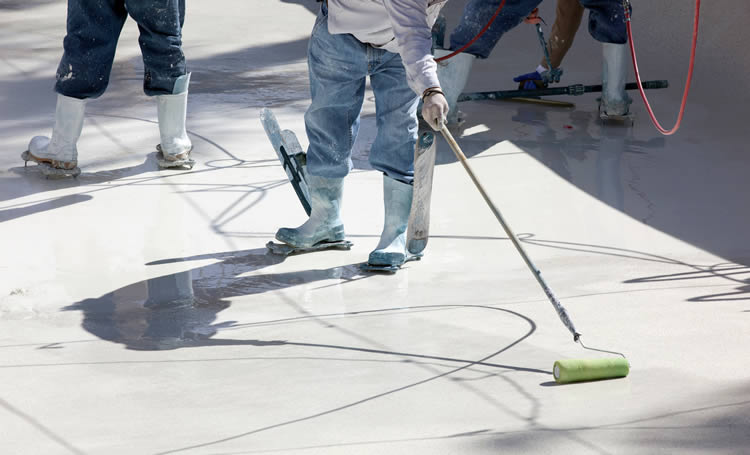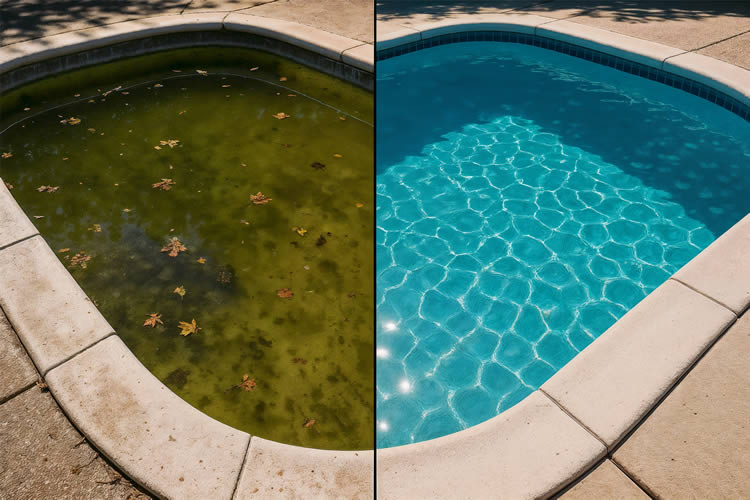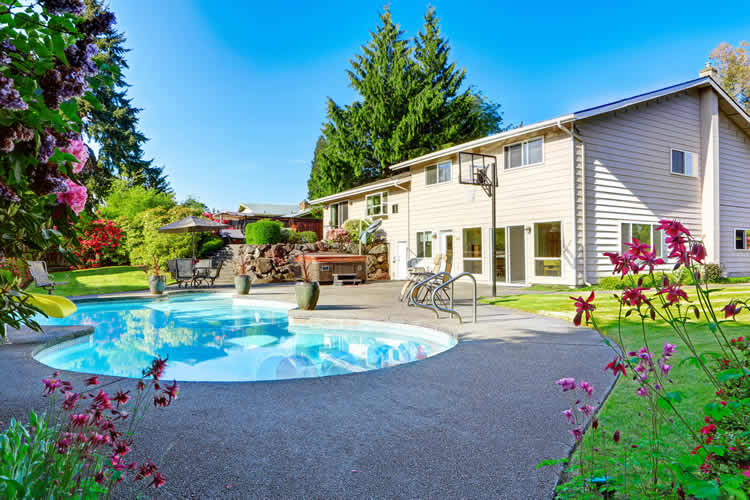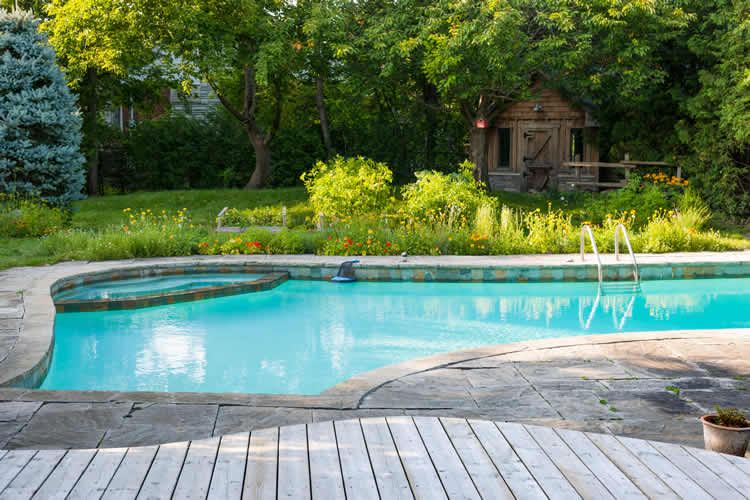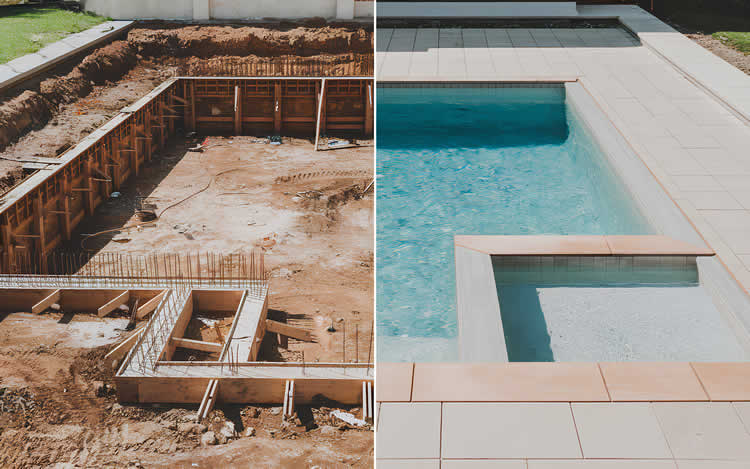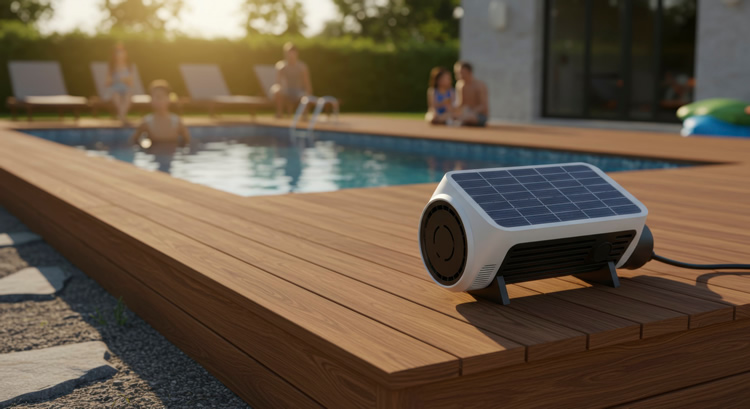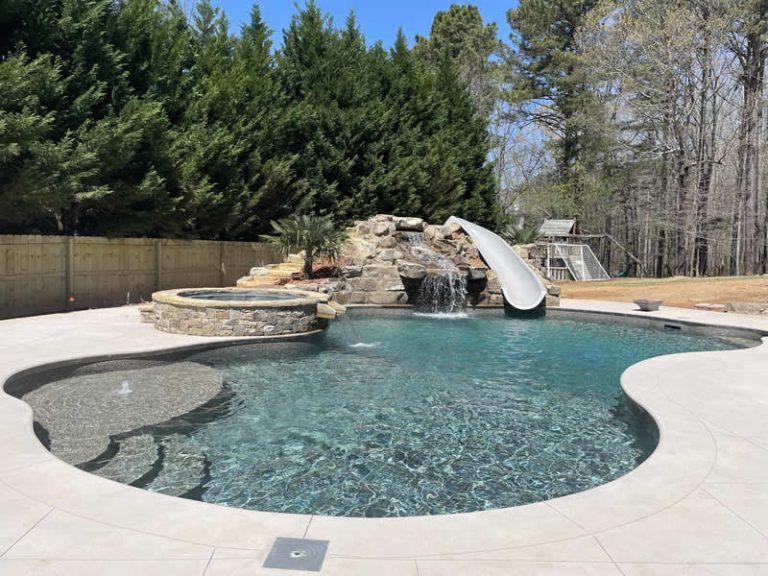When to Resurface or Replace Your Pool Finish
Every pool ages — even the best-built ones. Over time, the once-smooth, vibrant surface that sparkled under the Georgia sun can start to show its age: rough patches, stubborn stains, or fading color that just won’t come back, no matter how much you scrub.
If your pool feels like sandpaper or you’re constantly fighting discoloration, it may be time to resurface or replace the finish entirely. Knowing when and how to act can save you from bigger issues — like leaks or structural damage — down the road.
How Long a Pool Finish Really Lasts
The lifespan of a pool’s surface depends on what it’s made of and how well it’s maintained. Here’s a realistic breakdown for Georgia homeowners:
- Standard Plaster: 7–10 years (shorter if chemical balance is inconsistent)
- Quartz Aggregate (like Diamond Brite): 10–15 years
- Pebble Finishes (PebbleTec, Wet Edge, etc.): 15–25 years
- Tile: 20+ years, though grout and waterproofing may need earlier attention
Our region’s warm climate and long swimming seasons mean surfaces see more UV exposure and water circulation — both of which accelerate wear compared to pools in cooler climates.
Signs Your Pool Needs Resurfacing
Not sure if it’s time? Here are the most common warning signs your pool’s finish is nearing the end of its life:
- Rough Texture — If your feet or swimsuit snag on the surface, the plaster has eroded or “pitted.”
- Persistent Stains — Metal, algae, and mineral stains that won’t brush out may be embedded in the material.
- Fading or Discoloration — Sun, chlorine, and water chemistry gradually bleach pigments, leaving uneven patches.
- Chalking or Flaking — When the surface begins shedding fine dust, the topcoat has deteriorated.
- Leaks or Cracks — Small cracks may look cosmetic but can allow water to seep out and damage the shell over time.
- Increased Chemical Use — Older finishes become porous, causing pH and chlorine to fluctuate faster.
If several of these show up together, resurfacing isn’t optional — it’s preventive maintenance that protects your investment.
Resurfacing vs. Replacing: What’s the Difference?
Resurfacing means applying a new coating or finish layer on top of your existing structure. It’s the most common option and restores both beauty and durability.
Replacement (or renovation) involves chipping away the old surface, repairing the substrate, and applying an entirely new finish. It’s more expensive but essential if the base material is compromised or the pool is leaking.
A qualified pool professional can test for hollow spots and structural cracks to determine which route is best.
Popular Resurfacing Options for Georgia Pools
1. White or Colored Plaster
The classic look — smooth, bright, and budget-friendly. It’s affordable but less resistant to chemical and pH changes, which is why many Georgia homeowners upgrade to stronger options now.
2. Quartz Aggregate Finishes
Quartz blends durability with visual appeal. It’s basically plaster mixed with quartz crystals and pigments, creating a longer-lasting surface that resists etching and staining.
3. Pebble Finishes
The gold standard for longevity and natural beauty. Pebble finishes combine small river stones with cement, producing a textured, slip-resistant surface. Popular brands like PebbleTec and Wet Edge hold up beautifully in Georgia’s hot, humid climate.
4. Glass Bead or Tile Finishes
For a touch of luxury, glass bead finishes shimmer under sunlight, reflecting color beautifully. Full-tile pools are the most durable and easiest to clean but come at a premium price.
What to Expect During the Resurfacing Process
A typical resurfacing project takes about 7–10 days, depending on weather and material choice.
Step 1: Drain the pool.
Step 2: Chip away loose or damaged material.
Step 3: Repair cracks or structural weak points.
Step 4: Apply the new finish (sprayed or hand-troweled).
Step 5: Fill and rebalance the water chemistry carefully — this step determines how smooth and strong your finish cures.
Pro tip: schedule resurfacing in early spring or late fall when temperatures are milder and builders have better availability.
Maintenance After Resurfacing
A new surface needs gentle care during its “break-in” period (the first 30 days).
- Brush daily to remove dust and even out curing.
- Maintain consistent pH (7.4–7.6) and alkalinity (80–120 ppm).
- Avoid using pool heaters until after the surface fully cures.
- Don’t add salt (for salt systems) until your builder gives the go-ahead — usually after 30 days.
Keeping chemistry balanced during this phase determines whether your finish lasts five years or twenty.
Budgeting and Long-Term Value
In Georgia, resurfacing costs range from $5,000–$15,000, depending on size, material, and condition. While plaster may seem cheaper upfront, higher-end materials like pebble or quartz often pay for themselves by lasting twice as long with lower maintenance.
When done right, resurfacing doesn’t just refresh your pool — it revives your whole backyard.
Frequently Asked Questions
Q: How do I know if my pool needs a full replacement instead of resurfacing?
If you have significant structural cracks, constant leaks, or delamination (surface separating from shell), full replacement is likely the safer choice.
Q: Can I change the color during resurfacing?
Yes — resurfacing is the perfect time to change your pool’s aesthetic. Modern finishes come in dozens of hues and textures.
Q: How long should I wait before swimming after resurfacing?
Typically 7–10 days, but always confirm with your builder. Water chemistry and temperature can affect curing time.
Final Thoughts
Resurfacing isn’t just maintenance — it’s rejuvenation. It restores beauty, protects structure, and extends the life of your investment for years to come.
If your pool’s finish is showing its age, My Aqua Fun Pools can help you evaluate your options, choose the right material for Georgia’s climate, and deliver a flawless result. Whether you want a simple refresh or a full design makeover, we’ll make your pool look and feel brand new again.
Let’s Talk …
Let us take care of your Pool & landscape
At Aqua Fun, we don’t just build pools — we build relationships that last for seasons to come. Our team takes the time to understand your space, your needs, and how you actually use your backyard. Then we craft solutions that make every swim, soak, or gathering more enjoyable. It’s not about selling you more; it’s about helping you get it right.
If you’ve been thinking about improving, repairing, or re-imagining your pool, let’s talk. We’ll meet you where you are, explain your options clearly, and make sure the whole process feels simple and stress-free. That’s the Aqua Fun way — real people, real care, and results that speak for themselves.
Mon – Fri
8:00 – 6:00

